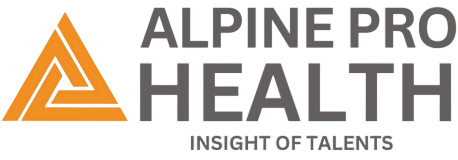The field of global surgery coding is undergoing significant transformations as we approach 2025. With advancements in medical technology, evolving healthcare policies, and the increasing demand for standardized medical documentation, surgery coding is becoming more complex and critical than ever before. This article explores the key trends shaping global surgery coding in 2025, offering insights into how healthcare providers, coders, and administrators can stay ahead in this dynamic landscape.
Rise of AI and Automation in Surgery Coding
One of the most prominent trends in global surgery coding is the integration of artificial intelligence (AI) and automation. By 2025, AI-powered tools will streamline coding processes, reduce errors, and improve efficiency. These tools can analyze vast amounts of medical data, identify patterns, and assign accurate codes with minimal human intervention.
For instance, natural language processing (NLP) algorithms can extract relevant information from surgical notes and automatically generate the appropriate codes. Consequently, this not only speeds up the coding process but also ensures greater accuracy, which, in turn, is crucial for compliance and reimbursement purposes. As AI continues to evolve, healthcare organizations that adopt these technologies will gain a competitive edge by reducing administrative burdens and optimizing revenue cycles.
Increased Focus on Standardization and Global Harmonization
As healthcare becomes more globalized, there is a growing need for standardized coding systems that can be universally understood and applied. We can expect to see increased efforts toward harmonizing surgery coding standards across different regions and countries. The ICD & CPT codes are already widely used, but there is a push for further alignment to facilitate seamless data exchange and improve patient care.
Standardization is particularly important for multinational healthcare providers and medical tourism. By adopting consistent coding practices, these organizations can ensure accurate billing, reduce discrepancies, and enhance collaboration among healthcare professionals worldwide. Additionally, standardized coding systems make it easier to track global health trends, conduct research, and develop evidence-based treatment protocols.
Impact of Telemedicine and Remote Surgery on Coding
The COVID-19 pandemic accelerated the adoption of telemedicine, and this trend is expected to continue into 2025. Remote consultations and virtual surgeries are becoming more common, creating new challenges for surgery coding. Coders must now account for procedures performed in non-traditional settings, such as patients’ homes or remote surgical hubs.
For example, robotic-assisted surgeries conducted by surgeons in different locations require specific coding guidelines to accurately reflect the complexity and technology involved. As telemedicine evolves, coding systems will need to adapt to include new categories and modifiers that capture these innovative practices. Healthcare providers must stay informed about these changes to ensure compliance and avoid claim denials.
Emphasis on Value-Based Care and Outcome-Driven Coding
The shift from fee-for-service to value-based care is reshaping the healthcare industry, and surgery coding is no exception. In 2025, there will be a greater emphasis on coding that reflects patient outcomes and the quality of care provided. This means that coders will need to document not only the procedures performed but also the results achieved, such as reduced complications, faster recovery times, and improved patient satisfaction.
Outcome-driven coding requires a more holistic approach to medical documentation. Coders must work closely with clinicians to capture detailed information about the patient’s condition, treatment plan, and post-operative progress. This trend aligns with the broader goal of improving healthcare quality and reducing costs by incentivizing providers to deliver effective and efficient care.
Growing Importance of Data Security and Privacy
As surgery coding becomes increasingly digitized, data security and privacy will be top priorities in upcoming years. Medical coding contains sensitive patient information, and any breach could have serious consequences for both patients and healthcare organizations. To address this challenge, coding systems will need to incorporate robust cybersecurity measures, such as encryption, multi-factor authentication, and regular audits. Moreover, compliance with data protection regulations will be essential. In Europe, coders must adhere to the General Data Protection Regulation (GDPR), while in the United States. They must follow the Health Insurance Portability and Accountability Act (HIPAA). Coders and healthcare providers must stay up-to-date with these regulations and implement best practices to safeguard patient data. Failure to do so could result in hefty fines, legal action, and reputational damage.
Role of Continuous Education and Training
The rapid evolution of surgery coding trends underscores the importance of continuous education and training for coders and healthcare professionals. By 2025, staying current with the latest coding guidelines, technologies, and regulations will be critical for maintaining accuracy and compliance. Organizations should invest in ongoing training programs, workshops, and certifications to ensure their staff is well-equipped to handle the complexities of modern surgery coding.
Additionally, collaboration between coders, clinicians, and IT professionals will be key to successfully navigating the changing landscape. Cross-disciplinary training can help bridge gaps in knowledge and foster a more integrated approach to coding and documentation.
Influence of Emerging Technologies on Surgery Coding
Emerging technologies, such as augmented reality (AR), virtual reality (VR), and 3D printing, are rapidly revolutionizing the field of surgery. As a result, these innovations are transforming both surgical procedures and coding practices. For instance, AR and VR assist in pre-operative planning and intra-operative guidance, requiring new coding categories to accurately capture these advanced techniques.
Similarly, 3D printing creates custom implants and prosthetics, requiring unique codes to reflect their customization and complexity. As these technologies become more widespread, coding systems must evolve to accommodate them, ensuring adequate reimbursement for healthcare providers.
Role of Patient-Centric Coding
In 2025, patient-centric care will continue to gain traction, and surgery coding will play a crucial role in supporting this approach. Patient-centric coding involves tailoring codes to reflect the individual needs and preferences of patients. This includes documenting personalized treatment plans, patient-reported outcomes, and shared decision-making processes.
By adopting a patient-centric approach, healthcare providers can improve patient satisfaction and engagement. which are increasingly important metrics in value-based care models. Coders must collaborate with patients and clinicians to accurately capture and code all relevant information.
Conclusion
Technological advancements, regulatory changes, and evolving healthcare models are shaping global surgery coding in 2025. AI, automation, and value-based care are transforming how surgeries are documented, billed, and analyzed. Healthcare providers, coders, and administrators must stay informed and adaptable to navigate this dynamic landscape successfully.
By embracing these trends and investing in continuous education and technology, organizations can enhance accuracy, compliance, and patient outcomes. As the world of surgery coding continues to evolve, those who proactively adapt will be well-positioned to thrive in the years to come.


